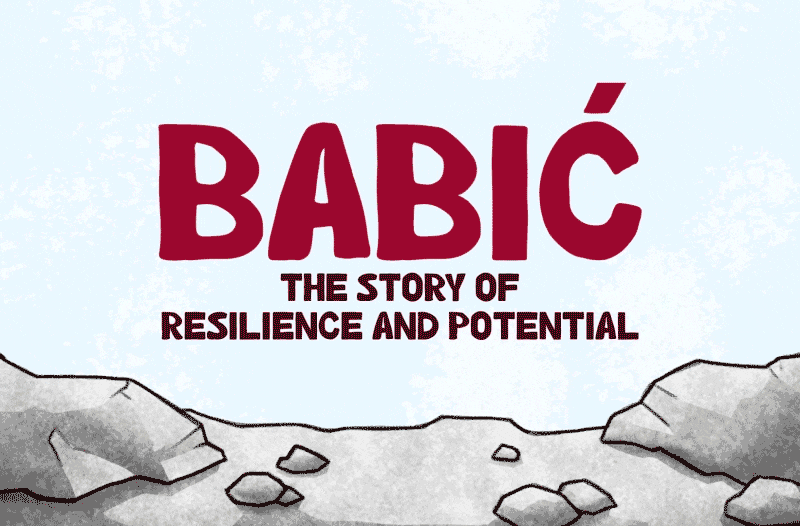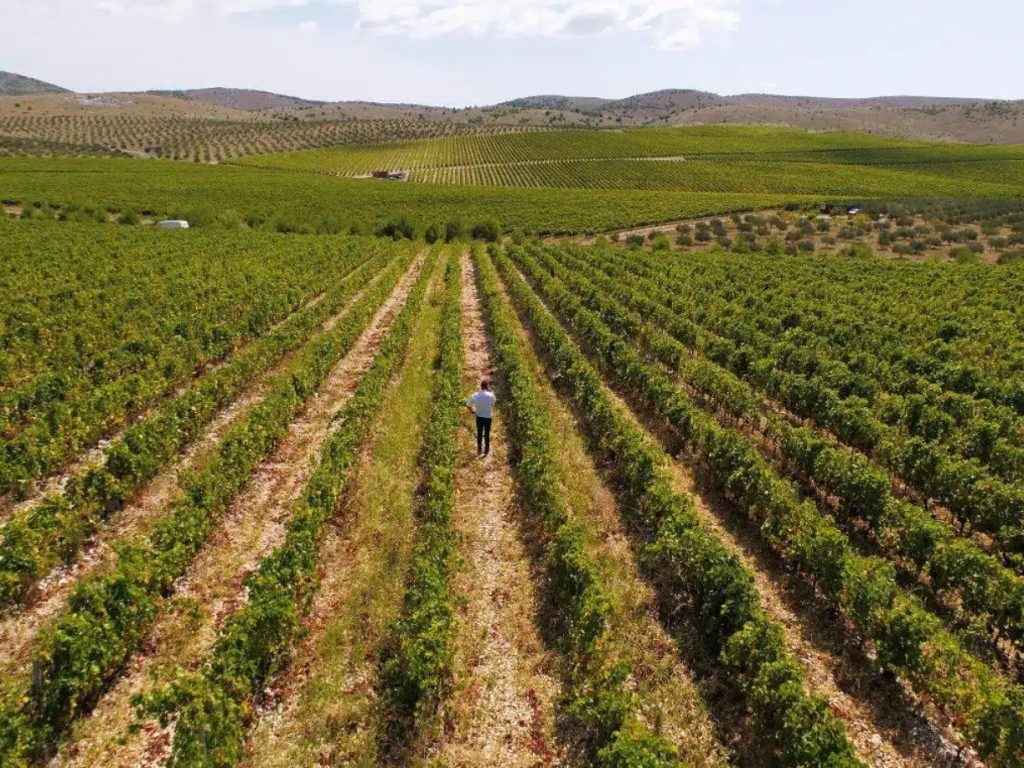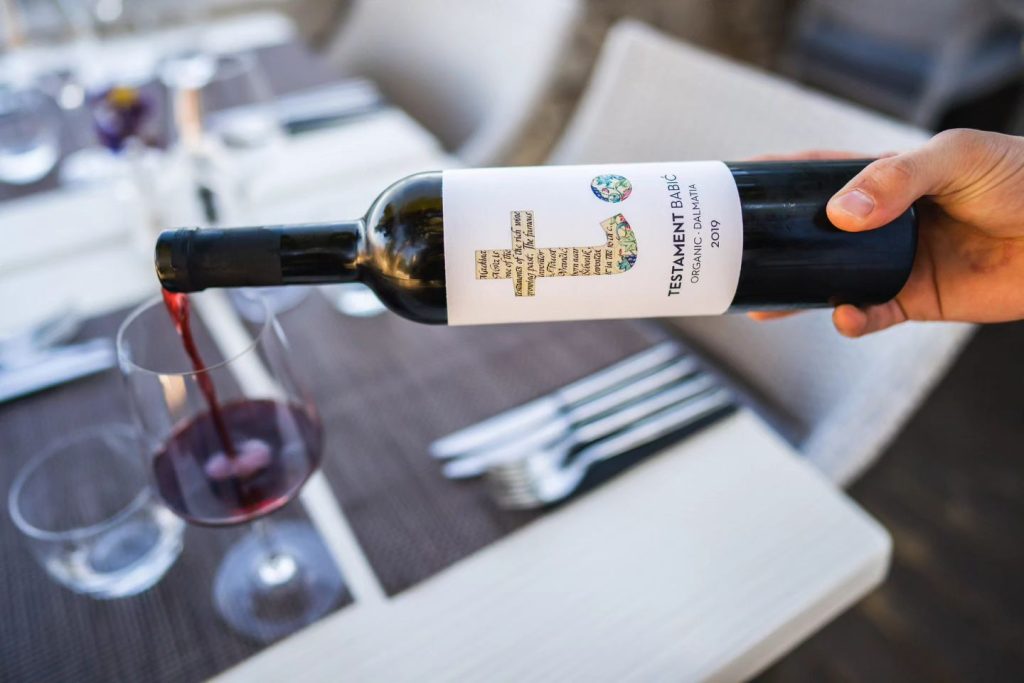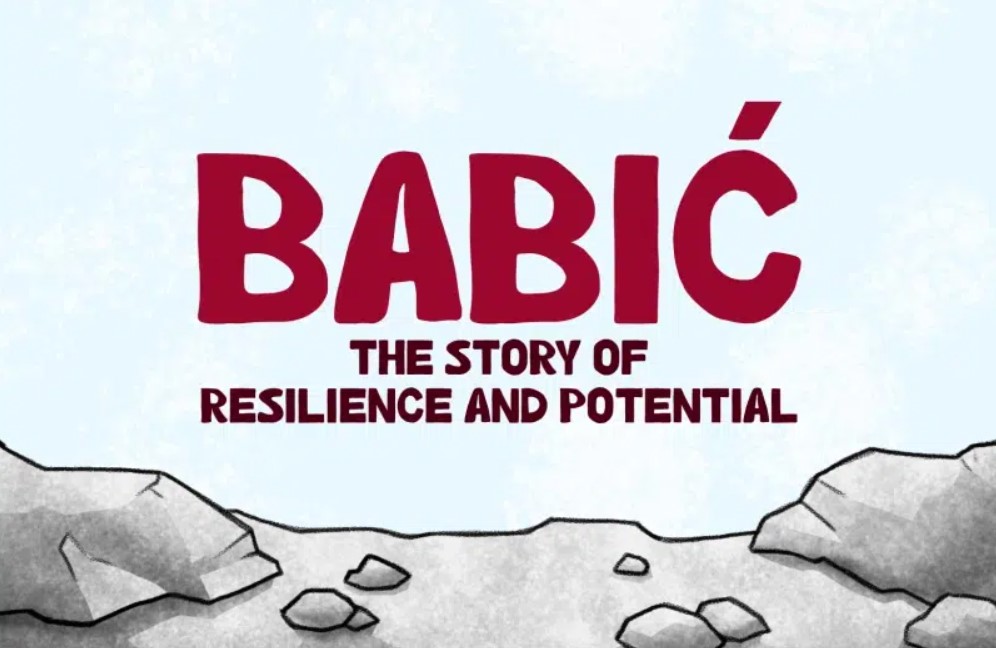November 3, 2023. – In the sun-kissed landscapes of Dalmatia, amidst the breathtaking vineyards, thrives a grape variety that embodies the essence of resilience and potential – Babić.
Alongside Plavac Mali and Crljenak (original Zinfandel), Babić stands as one of the quintessential native Croatian wine varieties, deeply rooted in the region’s viticultural heritage.
The article written by Wine & more delves into the captivating story of Babić, a grape that has not just survived but thrived under extreme conditions, producing exceptional wines celebrated for their complexity and terroir-driven flavors.

The Origins of Babić
Traditionally cultivated in the terraced vineyards of Primošten and Šibenik county, Babić has been a staple in the region since ancient times.
Local people from the stretch from Trogir to Šibenik were aware of a strong connection between the Babić grape and the austere and rugged Primošten vineyards, as since the beginnings of viticulture in this area, Babić was the leading variety (if not sole!) of the Primošten region.
Grown on poor, karst limestone soils, Babić is a variety that, with good winemaking skills, can produce one of the most balanced and unique red wines from the Dalmatia wine region.
With the right winemaking techniques, Babić embodies all the essentials to obtaining a great wine, including perfectly balanced extract, generous acids, tannins, attractive aromas, impressive intensity of taste, and long-lasting flavour.
Moreover, Babić is remarkably adaptable to the hot Mediterranean climate, retaining its freshness even during the driest years.
Babić is an undisputed terroir wine! The terraced vineyards above Primošten represent truly fascinating sights and are among the must-visit world vineyards.
The best locations for Babić are in the coastal zone, emphasizing Primošten and its locations Bucavac and Podstrana. However, some new locations are nearby, especially Jadrtovac, where awarded Babić wines are produced.
The Unique Terroir of Bucavac
At the heart of Babić’s resurgence lies the Bucavac appellation near Primošten, where the grapevine faces a true struggle for survival.
The vineyards, characterized by stone-laced terraces, are a testament to human determination and ingenuity. Stone walls, meticulously crafted by local winegrowers, encircle the vines, creating a mesmerizing “stone lace” effect.
These vineyards, shaped by blood, sweat, and tears, exemplify the epitome of terroir-driven winemaking.
The extreme conditions of Bucavac, with its steep slopes and minimal rainfall, force the Babić vines to dig deep into the karst and limestone soil, extracting nutrients and water in scarce amounts.
The resulting grapes, though sparse in yield, are rich in concentration, offering intense fruit aromas, and flavors that reflect the terroir’s signature.
Despite the challenges, Babić vines in Bucavac produce some of Croatia’s most highly regarded red wines, coveted for their unparalleled quality and distinct character.
What is Babić wine?
As a type of red wine originating from the Dalmatia region of Croatia, Babić grapes are characterized by small, thick-skinned berries, and they thrive in the unique terroir of Dalmatia, where the climate and soil conditions contribute to the grape’s distinct flavour profile.
Babić wine is renowned for its rich and complex flavour. It typically exhibits aromas of red fruits, particularly marasca cherry, spices, and subtle earthy notes.
It offers a delightful combination of flavours on the palate, often including notes of dark fruits and Mediterranean herbs. The wine is known for its balanced acidity and tamable tannins, especially compared to Plavac mali, which gives it a refreshing and lasting finish.
A general profile of Babić wine is as follows:
- Medium to full body: Babić is best when made from ideally ripe grapes that naturally achieve a fuller body.
- Tannin structure: Tannin levels are moderate to high. This provides structure to the wines, giving them a pleasant mouthfeel.
- Acidity level: The preservation of acidity is one of the critical advantages of Babić. This enables well-balanced wines that are both refreshing and fuller-bodied.
- Barrel aging: Babić enjoys aging in wood to soften its tannin and to benefit from micro-oxygenation. It also requires careful and delicate use of wooden barrels for aging.
- Difficult terroir: Babić is a variety that can thrive from a fistful of dirt surrounded by stone and extreme climate conditions.
- Flavour complexity: Babić displays a range of flavours. Fruitness, herbaceousness, earthiness and minerality, all in a unique way.
Babić wine pairs well with many dishes, particularly those found in Dalmatian cuisine, such as lamb and seafood. Babić’s versatility and unique flavour make it a favourite among wine enthusiasts and food lovers.
Babić has gained international recognition recently and has become a sought-after collectible due to its limited production and intriguing history. It has captured the attention of wine connoisseurs and investors alike, making it an increasingly popular choice in the world of fine wines.
What is the Babić WINE similar to?
Babić comes in two distinct types – Babić Mali and Babić Veliki – named after the size of their clusters. Babić Mali, characterized by its ability to accumulate sugar, produces wines that are fuller-bodied with a higher alcohol content.
When it comes to international comparisons, Babić shares similarities with Syrah, displaying spiciness and a complex flavor profile.
However, its true resemblance lies with Spain’s Tempranillo, known for its balanced wines, combining freshness, fullness, and structured tannins.
The Art of Babić Winemaking
Crafting Babić wines requires expertise and finesse. Skilled winemakers carefully navigate its moderate tannins and preserve its vibrant acidity through delicate barrel aging.
Babić’s ability to thrive in difficult terroirs, with rocky soils and extreme climate conditions, adds to its allure.
It takes a special vineyard and a talented winemaker to bring out the best in Babić, but the result is a wine that stands out from the rest with its unique and captivating flavour profile.
The Babić Wine Revival

Šibenik, as the center of the wine culture in the region, gathers visitors from around the world. It is well known for its cultural heritage and the gourmet wine and food offered.
Visitors can enjoy wine bars hidden in the narrow streets, Michelin-star restaurants, and luxurious hotel resorts.
The most important tip while visiting Šibenik for wine lovers is that in just a 15-minute drive, they can walk through the stunning vineyards of Babić.
The quality of Babić wines has been increasing in recent years, as a new wave of good Babić wines has appeared from winemakers such as Gracin, Testament, Prgin, Rak, Markus, Mark Pulley from Delusional Winery, and others.
Jadrtovac is a spectacular, eye-catching 300 hectares of land where Babić and olive groves spread over the gently rolling hills.
It has the potential to become the best visitors’ site for enjoying wine because few wineries have opened up there and offer visitors a unique experience to taste their excellent native varieties
Testament Winery
Testament Winery, owned by a Swedish fund under the supervision of the oenologist Juraj Sladić, shows the potential for serious Babić wines.
Testament vineyards in Jadrtovac are in the wine-growing region of Northern Dalmatia, near the medieval town of Šibenik.
With the unique climate and the specificity of the soil. This centuries-old survival ritual is felt and seen in Testament wines’ intense, deep colours, flavours, and aromas.
Testament wines are created in an organic production process with the benefits of the region’s special microclimate and soil, giving them a particularly rich and complex taste.

Testament Babić is a wine with a balance of fruit concentration, where the fruit combines red and darker flavours. The body is full and very powerful, but at the same time lovely and delicious.
In this Babić, you’ll find elegant cranberry at the nose and on the palate. Aged in oak, the expression is rounded with black and white pepper notes and distinctive earthiness.
One of the Testament winery’s significant achievements is Dalmatian Dog Babić. This is the first high-quality Babić wine introduced to a lower-price market.
Dalmatian Dog Babić expresses every distinct quality of the Babić grape in a very approachable manner. Succulent and charming, this dog doesn’t bite. But you certainly will enjoy a bite into its vibrant body.
Conclusion
In the picturesque vineyards of the Šibenik wine-growing region, Babić stands tall as a symbol of resilience, determination, and the indomitable spirit of winemaking.
Its ability to thrive under extreme conditions and produce wines of exceptional quality showcases the true potential of this native Croatian red grape variety.
As wine enthusiasts continue to explore the world of Croatian wines, Babić remains a shining example of the profound connection between the land, the grape, and the artistry of winemaking, inviting enthusiasts to savor a taste of Croatia’s rich viticultural heritage.
NOTE: The article was originally written at wineandmore.com











